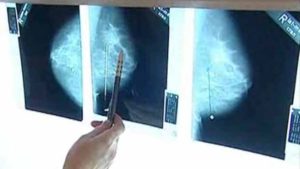 This exciting research opens a whole new way of thinking about the female breast and breast cancer. First of all, note that the study found that even our breasts have a microbiome (the microbial community).
This exciting research opens a whole new way of thinking about the female breast and breast cancer. First of all, note that the study found that even our breasts have a microbiome (the microbial community).
Key finding: the breast microbial population (specifically the bacteria) is different in healthy breasts (in the breast tissue) as compared to cancerous breasts.
From Science Daily: First look at breast microbiota raises tantalizing questions
The female breast contains a unique population of microbes relative to the rest of the body, according to the first-ever study of the breast microbiome. That study sought to lay the groundwork for understanding how this bacterial community contributes to health and disease, says first author Camilla Urbaniak, a PhD student at the University of Western Ontario.
"Proteobacteria was the dominant phylum in healthy breast tissue," says Urbaniak, noting that it is found only in small proportions at other sites in the body. That may reflect the fact that breast tissue produces high concentrations of fatty acids, and these bacteria are fatty acid metabolizers. Proteobacteria is also the predominant phylum in human milk.
"The fact that beneficial bacteria, such as Lactobacillus and Bifidobacteria, were also detected makes us wonder whether their presence might be protective for both mother and child," says principal investigator Gregor Reid of the University of Western Ontario. Breast milk is one of the initial sources of gastrointestinal (GI) bacteria for newborns, and their GI microbiota are different if they are formula fed, says Urbaniak.
Conversely, Escherichia and Bacillus predominated in cancerous breasts.
"Strains of Escherichia have been shown to have mutagenic and carcinogenic activity in the gut and the bladder," says Urbaniak.
In the study, the investigators collected breast tissue from 81 women. Ten of these had undergone breast reduction, and their breast microbiota served as controls. The remaining women had had benign or cancerous tumors. The tissue collected from these women was taken from about five centimeters from the tumor, from what is known as "normal adjacent" tissue. Bacterial censuses were taken using a molecular technique known as 16S ribosomal sequencing, and with cultures.
Studies of the microbiome in other parts of the body, most notably the gastrointestinal tract, have shown that certain changes in bacterial populations can lead to a variety of ills, from obvious gastrointestinal conditions such as inflammatory bowel disease to those more unexpected, such as diabetes, obesity, cancer and even neurological conditions.
The complete reference: C. Urbaniak, J. Cummins, M. Brackstone, J. M. Macklaim, G. B. Gloor, C. K. Baban, L. Scott, D. M. O'Hanlon, J. P. Burton, K. P. Francis, M. Tangney, G. Reid.Bacterial microbiota of human breast tissue. Applied and Environmental Microbiology, 2014; DOI: 10.1128/AEM.00242-14
